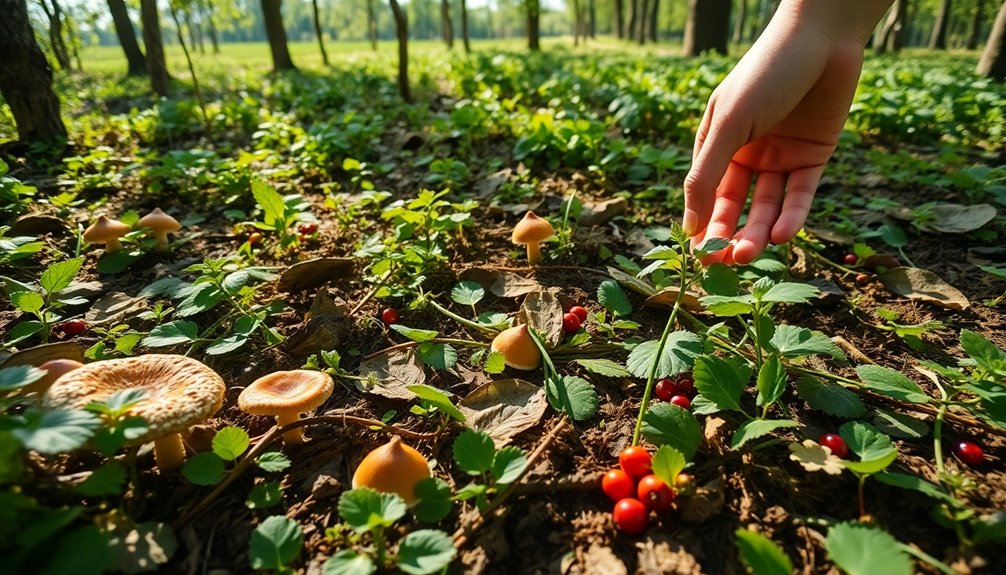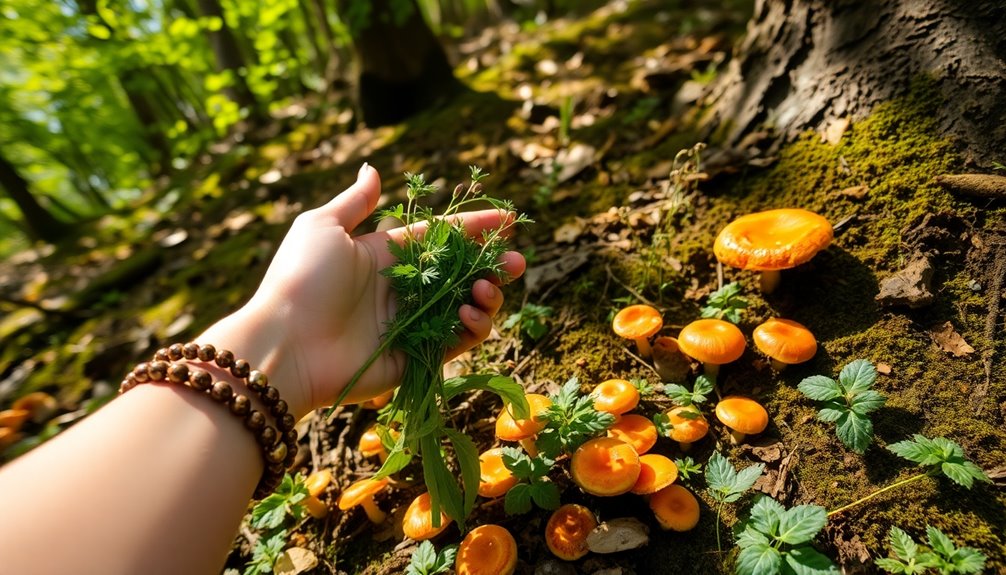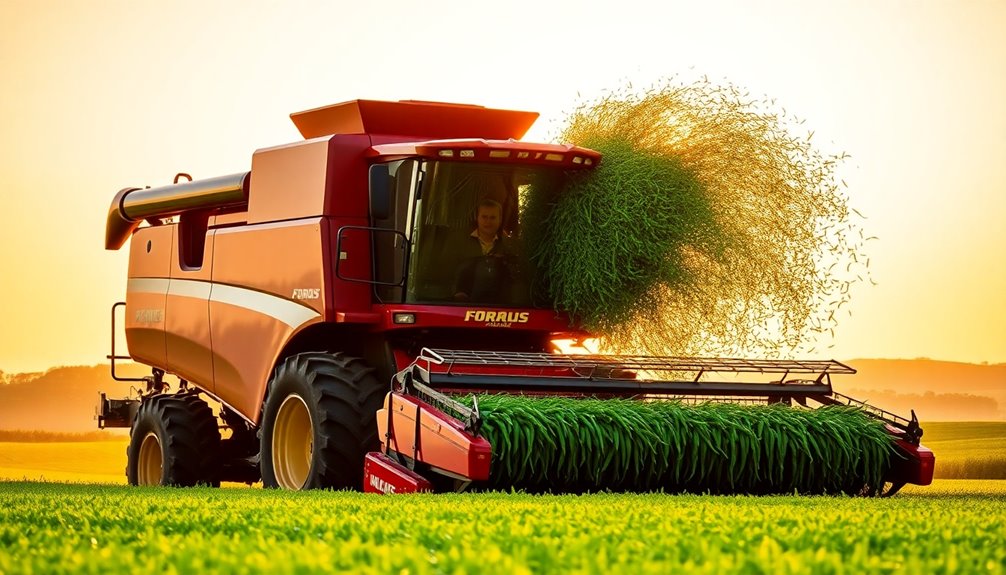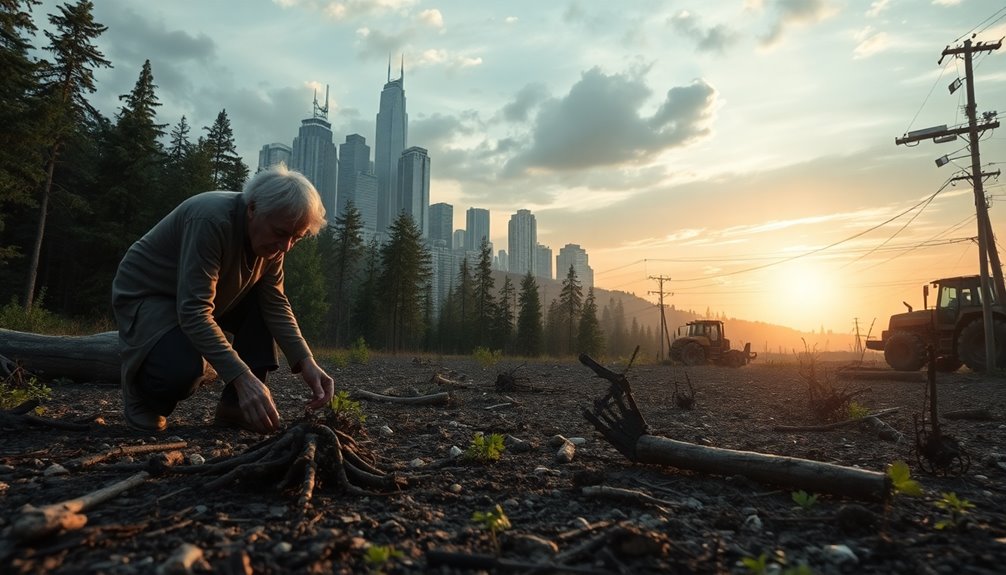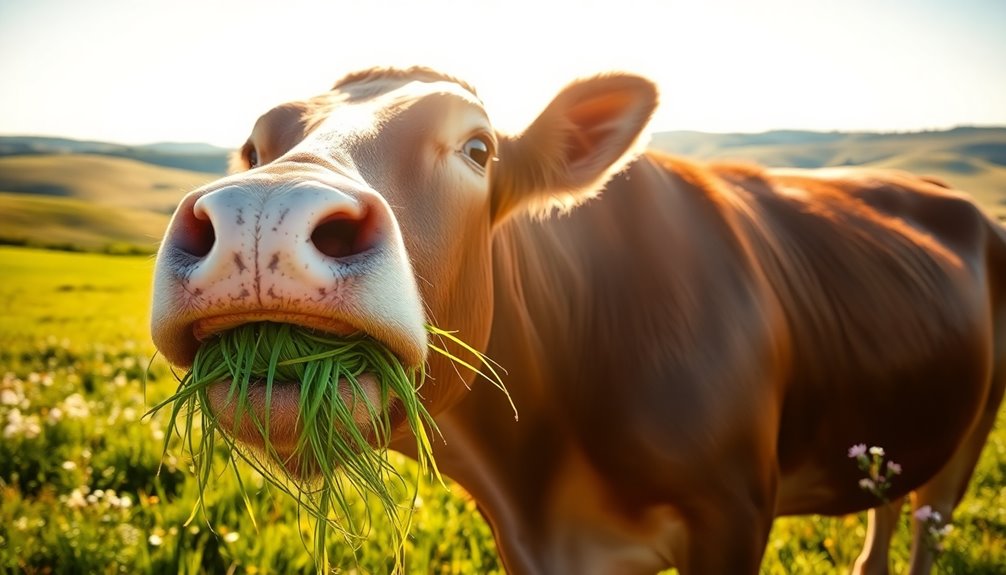Foraging isn't just about gathering food; it carries significant risks. Overharvesting threatens biodiversity and can decimate plant populations. You might misidentify toxic plants, putting your health at serious risk. Additionally, foraging often overlooks the historical context where marginalized groups, especially Indigenous communities, face restrictions that undermine their cultural practices. Unregulated foraging can lead to habitat destruction, and urban foraging increases the chance of contamination from chemicals. It's crucial to understand these risks to forage responsibly. There's much more to uncover about the complexities of wild harvesting.
Key Takeaways
- Overharvesting can lead to population declines of plant species, threatening biodiversity and ecological balance.
- Foraging can disrupt sensitive habitats, like wetlands, hindering regrowth and endangering local ecosystems.
- Misidentifying toxic plants or mushrooms can result in severe health risks, including poisoning or organ failure.
- Historical and systemic barriers restrict foraging rights for marginalized communities, perpetuating inequalities and cultural degradation.
- Urban foraging poses risks of pesticide and heavy metal contamination, jeopardizing health and safety.
Ecological Consequences of Foraging
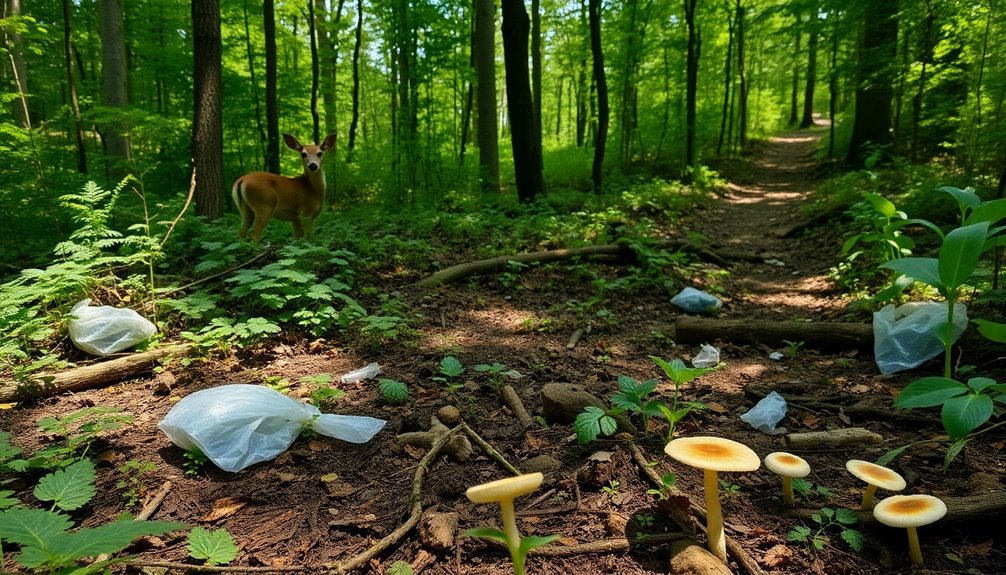
Foraging can seem like a great way to connect with nature and gather fresh food, but it comes with significant ecological consequences. Overharvesting certain plant species can lead to population declines, which threatens biodiversity and disrupts local ecosystems.
When you choose which plants to forage, consider their vulnerability; some species are more at risk of depletion than others, and your selection can impact ecological sustainability.
Moreover, foraging in sensitive habitats—like wetlands or endangered ecosystems—can exacerbate existing environmental pressures and harm fragile ecosystems. If you're not careful with your foraging techniques, you could disturb root systems or remove too many plants from a single area.
This can hinder regrowth and reduce future availability of those species. Timing is also essential; harvesting at the wrong season can prevent plants from reproducing, negatively affecting their long-term survival. Additionally, understanding tree relationships is vital for successful foraging, as it helps in recognizing the ecosystem's balance and the role each species plays.
Health Risks in Wild Harvesting
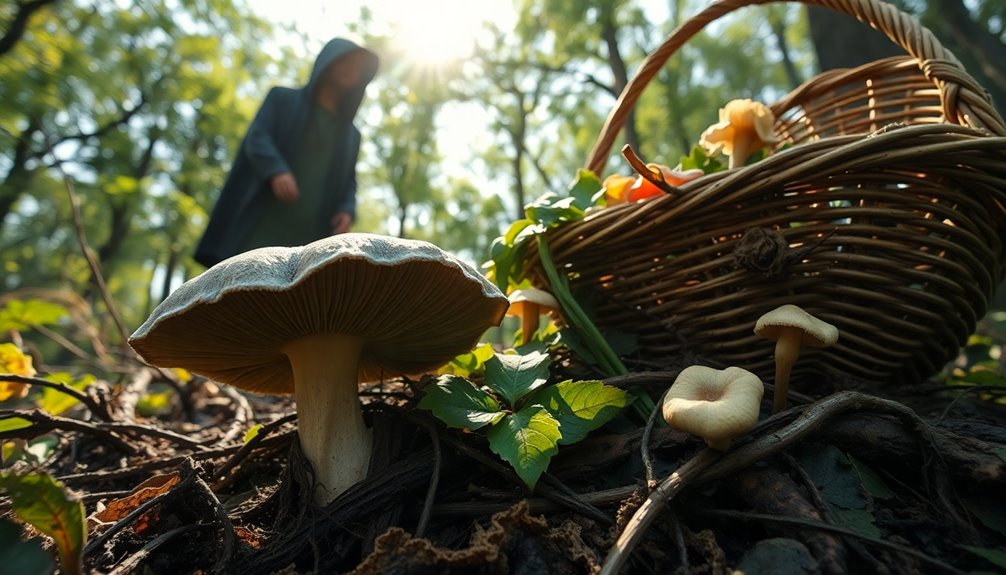
Engaging in wild harvesting can expose you to various health risks that are often overlooked. While foraged foods can be a delightful addition to your diet, it's vital to be aware of the potential dangers that come with them. Here are some significant health risks to take into account:
- Pesticides and fertilizers: Wild plants may harbor harmful substances that can lead to health complications. Additionally, indoor air quality can be compromised by pollutants, emphasizing the importance of safe food sources. Furthermore, the release of harmful pollutants from burning wood can also compromise the health of ecosystems where wild plants grow.
- Misidentification: Consuming toxic plant varieties can result in severe poisoning or even death. Additionally, using educational toys can help young children learn about plant identification safely. Proper identification is critical for ensuring safety, much like how early socialization leads to well-adjusted adult dogs.
- Allergic reactions: Some individuals may experience rashes or skin irritations after coming into contact with certain plants. Many people with allergies also benefit from using air purifiers to mitigate symptoms and improve their overall indoor environment.
- Contaminated areas: The lack of regulation means you might inadvertently harvest from polluted sites.
One of the most notorious risks is with wild mushrooms. Improperly identifying these can lead to serious health consequences, including organ failure. Additionally, foraging practices can affect biodiversity and ecosystem health, further complicating the safety of foraged foods.
With these potential hazards in mind, it's important to approach wild harvesting with caution and knowledge. Always double-check plant identification and verify the areas you forage from are safe and uncontaminated. Your health is worth the extra effort!
Historical Context of Foraging Restrictions
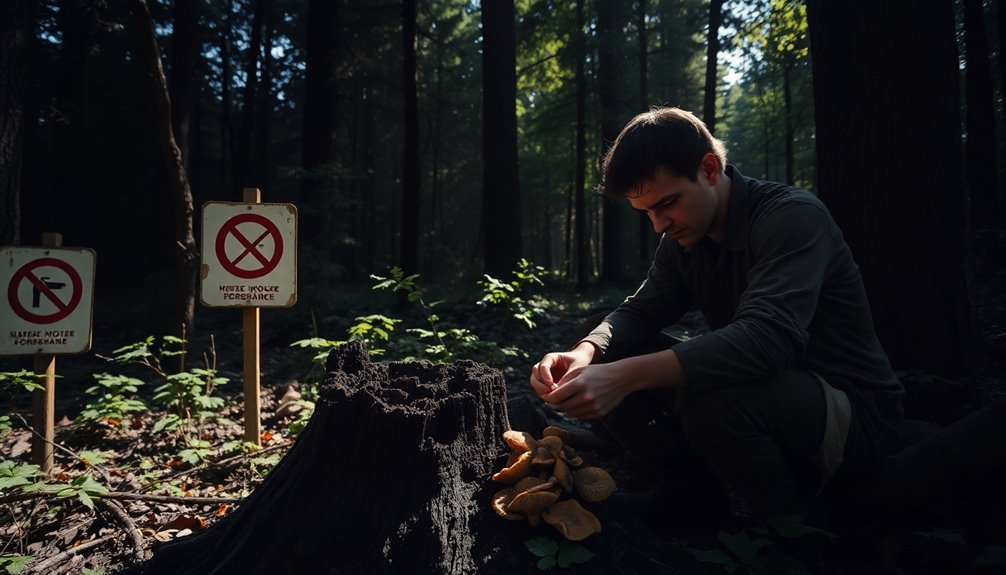
When you explore the history of foraging restrictions, you'll find that these laws often aimed to control marginalized communities, particularly Black and Indigenous populations.
The legacy of racial oppression and colonial displacement shaped anti-foraging laws, reinforcing systemic inequalities in access to natural resources.
Understanding this context is essential to recognizing how these historical injustices still impact modern foraging practices.
Racial Oppression and Foraging
Historically rooted in racial oppression, foraging practices have faced significant restrictions that disproportionately impact Black and Indigenous communities. After the abolition of slavery in 1865, many freed families relied on these practices for sustenance. However, systemic racism led to anti-foraging laws that limited their independence and access to public spaces.
Understanding this context highlights how these restrictions are more than just legalities; they reflect broader societal issues.
Consider these key points:
- Anti-foraging laws emerged to control Black communities and limit their self-sufficiency.
- Freed families depended on foraging for food and income, showing its importance for survival.
- Ongoing restrictions continue to affect access to traditional food sources for marginalized groups.
- The legacy of segregation shapes current attitudes and regulations surrounding foraging.
These laws create barriers, making it difficult for Black and Indigenous communities to practice their cultural traditions and access natural resources.
Colonial Displacement Effects
The impact of colonialism on foraging practices is profound, as it often disrupted the traditional relationships between Indigenous communities and their land. Colonizers claimed they were protecting and civilizing these communities, but their actions led to the displacement of numerous cultures and the criminalization of their foraging practices.
For instance, the San Bushmen of Botswana faced a hunting ban in 2014, showcasing how colonial policies continue to affect traditional lifestyles.
Anti-foraging laws emerged particularly in response to the independence sought by freed Black communities, reinforcing systemic racism and further limiting access to essential food sources.
Historical policies like the 1830 Indian Removal Act forcibly relocated tribes, severing their connections to ancestral lands and their foraging practices. This disconnection not only led to cultural degradation but also resulted in ecological harm, as traditional knowledge about sustainable harvesting was lost.
Anti-Foraging Laws History
Anti-foraging laws emerged in the United States during the late 19th and early 20th centuries as a response to growing urbanization and social control efforts. These laws targeted marginalized communities, particularly Black and indigenous populations, restricting access to traditional food sources. They aimed to enforce dependence on state resources and diminish cultural practices tied to foraging.
Key factors influencing these laws included:
- Systemic Racism: Many regulations sought to limit the independence of Black communities who relied on foraging, especially post-slavery.
- Conservation Justifications: Authorities framed the criminalization of foraging as a means of protecting natural resources, often ignoring cultural significance.
- Urbanization Priorities: The movement toward urbanization prioritized land for agriculture and industry, sidelining traditional foraging rights.
- Disproportionate Impact: Modern anti-foraging laws still reflect inequalities, affecting marginalized communities more severely while privileged groups enjoy broader access to public lands.
Understanding this history is essential. It reveals how anti-foraging laws not only restrict food access but also perpetuate systemic inequalities that continue to affect marginalized communities today.
Impact on Indigenous Rights

Indigenous communities often find themselves displaced from their ancestral lands, stripped of their rights to forage sustainably.
Systemic legal barriers further complicate their struggle, making it difficult for them to reclaim traditional practices that are essential to their culture and identity.
It's important to recognize how these injustices not only threaten Indigenous rights but also jeopardize the ecosystems they've nurtured for generations.
Displacement From Ancestral Lands
Displacement from ancestral lands has severely impacted the rights of Indigenous communities, often stripping them of their ability to practice traditional foraging. When their lands become private property, the connection to their cultural identity and food sources diminishes. This loss isn't just about land; it's about survival and heritage.
Consider these key points:
- Cultural Disruption: Displacement erases traditional knowledge and practices tied to foraged food.
- Loss of Biodiversity: Indigenous peoples safeguard 80% of the world's biodiversity, integral to ecological balance.
- Legal Barriers: Laws, like the 1830 Indian Removal Act, force Indigenous peoples from their lands, severing ties to their environment.
- Sovereignty Challenges: Restrictions on foraging rights undermine Indigenous sovereignty, leading to systemic inequalities.
For example, the San Bushmen in Botswana were banned from hunting in 2014, impacting their sustainable foraging methods. You see, these practices are essential not only for their diets but also for maintaining their cultural heritage.
Displacement from ancestral lands isn't just a physical loss; it's an ongoing threat to the existence of Indigenous identities and their rights to foraged food.
Systemic Legal Barriers
While many may not realize it, systemic legal barriers greatly hinder the ability of Indigenous communities to practice traditional foraging. These barriers often arise from laws rooted in colonialism and systemic racism, which marginalize Indigenous peoples and disrupt their connection to ancestral lands. For instance, the San Bushmen of Botswana faced a hunting ban in 2014 that criminalized their foraging rights while allowing wealthy hunters to exploit endangered species legally.
This inequity shows how legal frameworks prioritize economic development over Indigenous rights, eroding traditional ecological knowledge. The table below illustrates the impact of these barriers on foraging practices:
| Factor | Impact |
|---|---|
| Accessibility to Land | Restricted access to ancestral territories |
| Legal Recognition | Lack of acknowledgment of foraging rights |
| Economic Priorities | Favoring commercial activities over tradition |
| Biodiversity Protection | Undermining Indigenous stewardship roles |
Indigenous communities, comprising only 5% of the global population, are crucial in protecting 80% of the planet's biodiversity. Recognizing and respecting their foraging rights is essential for conservation and cultural survival.
Racial Inequities in Foraging Practices
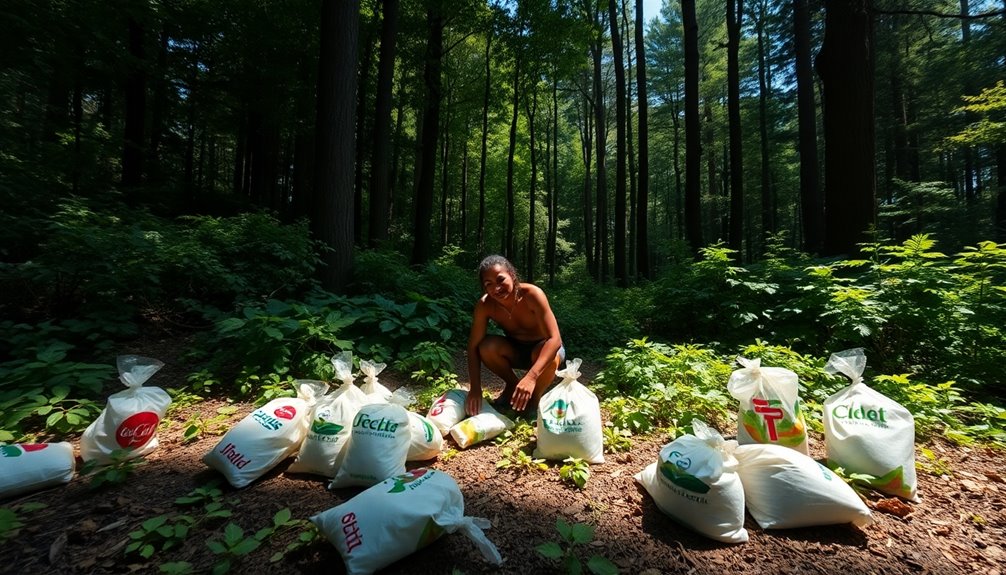
Throughout history, racial inequities have deeply influenced foraging practices, particularly impacting Black and Indigenous communities. Anti-foraging laws were often designed to restrict Black independence and force reliance on ex-slavers for sustenance.
Today, systemic racism continues to shape who can access foraged food, with regulations disproportionately affecting marginalized groups.
Consider these key points:
- Indigenous peoples make up only 5% of the global population but protect 80% of biodiversity, showcasing the importance of their foraging rights.
- Displacement due to colonialism has eroded Indigenous cultural identities and access to traditional food sources.
- Modern regulations, like those in New York parks, impose fines for foraging, highlighting ongoing racial inequities.
- Black and Indigenous communities often face harsher penalties for foraging compared to more lenient rules in other regions.
These factors illustrate how racial inequities persist in foraging practices, undermining the rights and food sovereignty of communities that have historically relied on wild harvesting.
It's essential to recognize these disparities to advocate for more equitable access to foraged resources.
Legal Barriers to Foraging

Racial inequities in foraging practices aren't just rooted in historical injustices; they're also reinforced by contemporary legal barriers that restrict access to wild harvesting. In many regions, laws impose strict fines for harvesting common edibles in public parks, criminalizing foraging for Black and Indigenous communities. These regulations reflect systemic racism embedded in historical policies, making it difficult for marginalized groups to access natural resources.
Urban areas often have specific laws prohibiting foraging to protect local ecosystems, leading to confusion about what's permissible. This lack of clear guidance can deter you from foraging, even for fruits, nuts, and mushrooms that federal law allows. However, the absence of regulations around ephemeral greens creates further legal ambiguities.
These legal barriers to foraging disproportionately favor homeowners and those with private land, limiting opportunities for community members who can't access these spaces. As a result, socioeconomic factors play a significant role in who can engage in wild harvesting.
Understanding these legal challenges is essential for advocating for more inclusive foraging practices that benefit everyone, regardless of their background or economic status.
Misidentification and Toxic Plants

Foragers face significant risks when misidentifying wild plants, and the consequences can be dire. Consuming toxic plants can lead to serious health risks or even death. Many edible plants have toxic look-alikes, making accurate identification essential. For example, the edible wild carrot, known as Queen Anne's lace, can easily be confused with the highly poisonous poison hemlock.
Consider these alarming facts:
- Nearly 25% of foragers have reported experiencing mild to severe poisoning symptoms due to misidentification.
- Plants like water hemlock can cause fatal consequences if ingested.
- Pokeweed contains harmful compounds in its berries and roots, which remain toxic even when cooked.
- Urban foraging areas increase the risk of encountering plants contaminated with pesticides or heavy metals.
These dangers highlight the importance of education and careful observation. Misidentification of wild plants can turn a seemingly innocent foraging adventure into a life-threatening situation.
Always double-check your finds and consult reliable sources before consuming anything from the wild. Remember, while foraging can be rewarding, the risks of toxic plants demand your utmost attention and caution.
Overharvesting and Biodiversity Loss
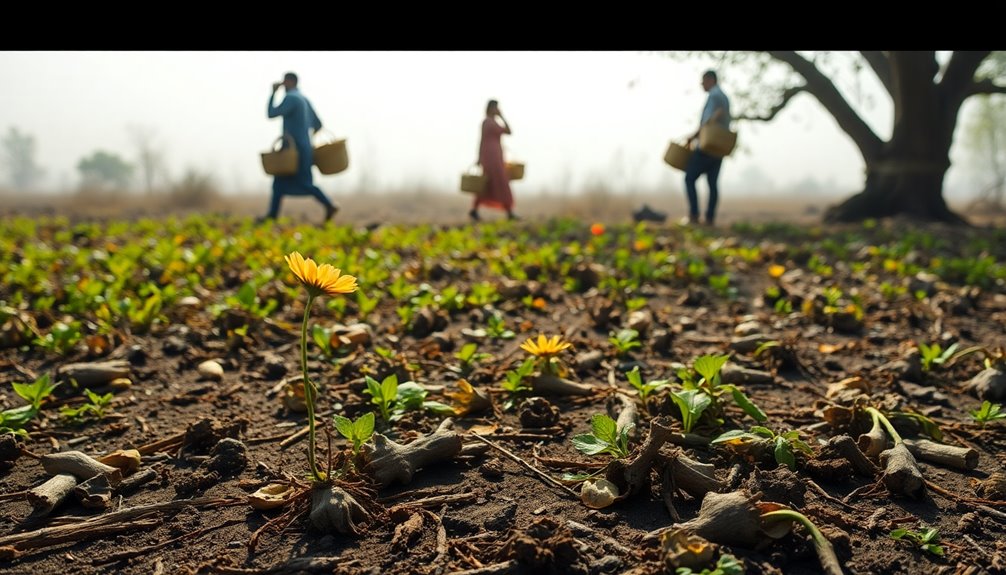
Misidentifying toxic plants poses serious risks to foragers, but the dangers don't end there. Overharvesting can greatly decline plant populations, particularly for species that take longer to regenerate. When you harvest too much, you disrupt local ecosystems and contribute to biodiversity loss. Research shows that excessive foraging often leads to the extinction of certain species, especially in areas where demand surpasses sustainable levels. Additionally, the lack of sustainable practices can exacerbate these issues, leading to further depletion of vital resources.
In regions with high foraging activity, native species can be pushed out by invasive plants, which thrive when local flora is overharvested. This shift reduces ecological resilience and alters habitat dynamics. Additionally, many animals rely on specific plants for food and shelter; removing these keystone species through overharvesting can have cascading effects on wildlife populations. For example, in states like Wisconsin, overharvesting of certain wild edibles can lead to decreased availability of native species that support local wildlife. It is crucial to understand the importance of sustainable foraging practices to ensure that ecosystems remain balanced and flourishing.
To combat these issues, implementing sustainable foraging practices is essential. By adopting responsible harvesting methods, you can help enhance plant populations and support the overall health of ecosystems.
Ethical Considerations in Foraging
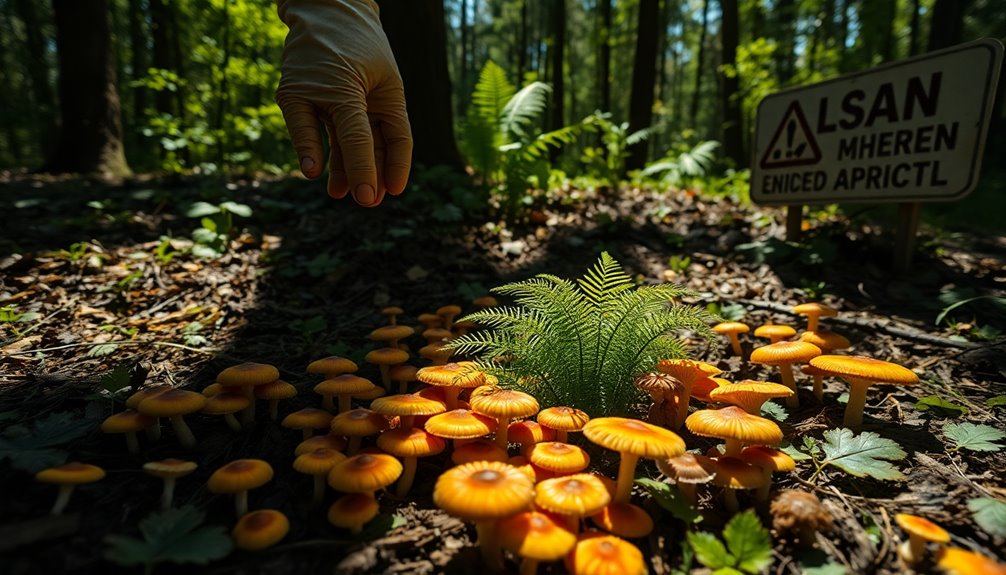
The practice of foraging raises important ethical factors that every gatherer should keep in mind. Understanding these aspects can help you make responsible choices while enjoying this activity. Here are some key points to reflect upon:
- Land Ownership: Always be aware of where you're foraging. Harvesting in restricted areas can lead to legal issues and trespassing. Additionally, respecting Indigenous land rights is crucial in maintaining a harmonious relationship with the communities connected to the land.
- Local Regulations: Different regions have specific rules about foraging. Some plants may be protected, so it's vital to know and follow the local laws. Additionally, many areas have seasonal crop rotation practices that can guide foraging efforts.
- Sharing Locations: Be cautious when discussing your favorite foraging spots. Sharing these locations can lead to overharvesting, risking the health of the local ecosystem.
- Impact on Species: Overharvesting can threaten local plant populations, especially rare or endangered species. Always practice responsible gathering methods.
Respecting the environment and local ecosystems is essential. Excessive foraging can disrupt habitats and hinder the recovery of plant populations. Additionally, the rising focus on climate change policies is prompting many to consider sustainable practices, including how we interact with natural resources.
Sustainable Foraging Practices
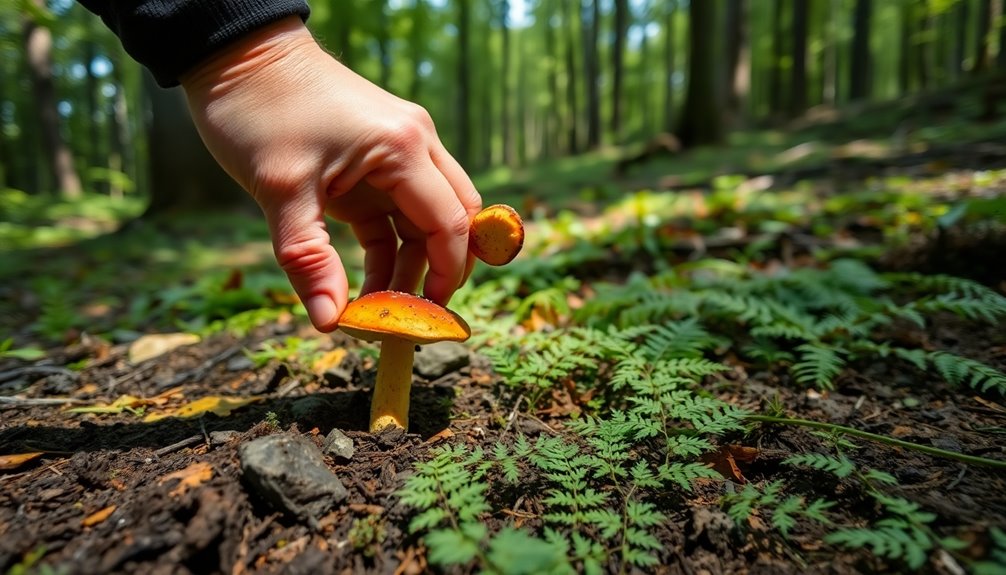
Sustainable foraging practices are vital for maintaining the health of our ecosystems while enjoying nature's bounty. When you forage, it's important to harvest only what you need. This guarantees that enough wild plants remain for wildlife and future growth, promoting ecological balance.
You can adopt responsible techniques, like taking just one leaf per plant and avoiding disturbing the roots. This not only supports the long-term availability of wild edible species but also encourages their growth.
Foraging in diverse locations helps minimize the impact on any single plant population. This approach fosters healthier ecosystems and reduces the risk of overharvesting. Knowledge of local flora is key; understanding which species are endangered or vulnerable allows you to avoid depleting those plants.
Sustainable foraging also encourages stewardship of wild plants. Notably, research shows that moderate harvesting can stimulate plant growth and enhance biodiversity. Furthermore, adopting eco-friendly practices can help ensure that foraging does not negatively impact the environment.
Frequently Asked Questions
What Is Bad About Foraging?
Foraging can have several drawbacks. You might accidentally overharvest, putting rare plant species at risk and disrupting local ecosystems.
There's also the danger of misidentifying plants, which can lead to serious poisoning or allergic reactions. Additionally, you could face legal issues if you forage in protected areas.
Finally, foraging can create ethical dilemmas, like respecting private property and avoiding overexploitation by not sharing sensitive gathering locations.
How Does Foraging Affect the Environment?
Foraging affects the environment in several ways.
When you harvest wild plants, you can disrupt local ecosystems, especially if you target rare species. If you're not careful about the timing, you might interfere with their growth cycles.
Additionally, focusing on certain plants can reduce their reproductive success. Poor foraging practices can also lead to the spread of invasive species, further harming native flora.
Being mindful and informed about local plants can help mitigate these impacts.
What Does the Bible Say About Foraging?
The Bible portrays foraging positively, encouraging you to respect the land and its bounty.
In Leviticus, you're reminded to leave parts of your harvest for the less fortunate, promoting sharing and sustainability.
Ruth's gleaning illustrates the practice's cultural significance, while Proverbs urges hard work and self-sufficiency, aligning with foraging.
The concept of "manna" also reflects reliance on nature for sustenance, suggesting a divine appreciation for natural resources.
What Are Three Cautions Regarding Foraging?
When you're foraging, it's essential to keep a few cautions in mind.
First, be aware of plant misidentification; consuming toxic plants can lead to serious health issues.
Next, consider the legal restrictions in your area; harvesting on protected lands without permission can lead to fines.
Finally, remember that overharvesting can disrupt local ecosystems, threatening biodiversity.
Always forage responsibly to guarantee you're protecting both your health and the environment.
Conclusion
As you venture into the wild, armed with your foraging basket, remember: the thrill of discovery can mask a darker truth. Each mushroom and berry carries risks you might not see at first glance. What if that innocent-looking plant harbors toxins? Or what if your harvest disrupts fragile ecosystems? The allure of wild harvesting can draw you in, but it's essential to tread carefully. In the end, the choices you make could echo far beyond your next meal.


